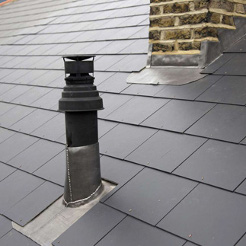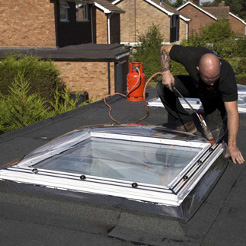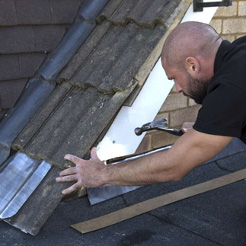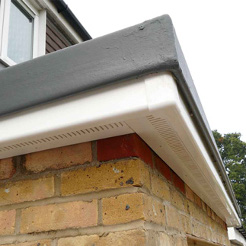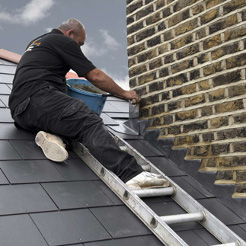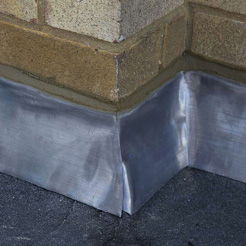Flashings are an important part of every roof and play a key role in ensuring your roof remains watertight even in the most adverse weather conditions.There are various different types of roof flashing, and it will usually be fitted anywhere where the roof joins to the wall, such as chimneys, roof valleys, or any other parts of your house.It serves an important purpose for your home, so it is important you find an experienced roofer to ensure flashing is installed correctly to protect your property. Allow us to explain the purpose of flashing and the fitting process further…
What is the purpose of roof flashing?
Roof flashings are an important part of any roof, essential during the construction process to secure your roof and making sure that your house is protected from any rainwater once construction is complete. You can expect to see flashings at the point where your roof meets the chimney, or in a pitched roof where the two roofsjoin, known as valley flashing. Flashing is the most suitable material for the job, due to the fact that materials such as cement would begin to crack and would therefore fail to prevent water leaking into the building.
Roof flashing materials
In the past, roof flashing was traditionally always made from lead sheet, as the properties of the metal were most suitable for roofing. Lead is soft and can be easily worked into different shapes whilst maintaining its watertight properties. This makes it an ideal roofing material and useful for protecting your home. Due to the cost of lead and contamination concerns, other materials such as zinc, rubber and plastic have now become more commonly used.
Different types of roof flashing
If your home is a new build or you are having an entirely new roof fitted, flashing will be fitted before the roof tiles are laid. This is a complex process and should be undertaken by roofing professionals as part of the process of fitting your new roof.
Base flashing
This will always be the bottom layer of flashing. Roof features such as chimneys will need two pieces of flashing fitted. This is because of the difficulty involved in installing around this structure. When roof materials expand and contract as a result of the weather, these two pieces can move more easily and keep the structure secure
Counter-flashing
This will sit opposite or above the base flashing, to act as a counter to the base and is the second piece of the structure.
Continuous flashing
This is a long piece of metal that carries water down to the shingles, often referred to as “apron flashing”, it acts as protection for the joint between a vertical wall and sloping roof. Long pieces have expansion joints built in so that they can move as the home expands and contracts.
Step flashing
Rectangular piece of flashing bent 90 degrees in the centre. Usually used when the roof meets a wall, multiple pieces will be installed in layers with shingles. This directs the flow of water away from the wall.
Kickout flashing
There is a gap between where step flashing ends and the gutter of your roof. This is where kickout flashing will be installed to direct water away from the wall and into the gutter.
Drip edges
This thin metal flashing will be fitted to the edge of the roof to ensure water drips off the roof without leaking or causing water damage to the property.
Roof flashing is an important part of your roofing and should be installed with great care during the installation and repairs process. We would recommend having this done by an experienced professional, which is where our team at Roof Rescue can help. Call us today on 020 3189 1618 or email to book in for our roofing services.

